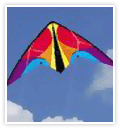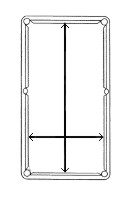Guide for New Kite Pilots
John Roufas2021-12-29T09:23:22-05:00Guide for New Kite Pilots

There is some debate about where kites originated. Some say China, and some say in the South Pacific with the islanders there. The Japanese and Balinese have their own stories which explain the origin of kites. Wherever they were invented kites have a long history of recreational and scientific use.
Kites are used as a fishing aid in the Solomon Islands. Kites are used by the Koreans to announce the birth of a child. Kites were used by the Chinese during battles. They were made of bamboo and had the tendency to hum and shriek in the wind which frightened the enemy. Kites in the Chinese and Japanese cultures were capable of holding or “flying” a person in the air where the person could spy or act as a sniper using bows and arrows. Many kite designs that were developed for the military or for scientific purposes can be seen at kite festivals and competitions today.
Whether you are a serious stunt kiter or just want to lay in the grass and see how high and long your kite will fly, F.G. Bradley’s has assembled a useful guide to help you touch the sky.
| Things you might need to know: |
What is a good beginner kite?
The smaller Deltas and Nylon Dragon kites are both easy to fly and beautiful to view.
What ages do you recommend to start flying kites?
While even a toddler enjoys kite flying with an adult, the general rule is 6 years old to pilot solo. For dual line stunters and large kites: Depending on skill level and size of the kite, we recommend a minimum of 10 to 16 years. Stunt kites require a certain level of maturity, so adult supervision is always recommended for children under the age of 14 years.
Does my kite come with string?
Many of our kites are ready to fly and come with kite line included. For those that do not include line the packaging will indicate the type off line required.
Does my kite need a tail?
All of our kites that require a tail come with one included. Many people will add a tail for decorative purposes, however, in strong winds any kite will benefit from the stability that adding a tail provides.
Should the sticks in my delta kite be pushed all the way to the nose or the back of the kite?
You need to gently work the two sticks (or spars) in the seams on the sides (leading edges) to the bottom of the kite.
Do I need to run to launch my kite?
Never. (see Kite Tips for advice on launching your kite)
My kite keeps stalling and won’t gain altitude. What’s wrong?
There is either not enough wind or you need to raise the tow point on the kite. We recommend that you change the tow point in increments of 1/8th of an inch. The tow point is the point at which the line is attached to the bridle to maintain a balance between pull and lift to give the kite altitude.
What is a good beginner stunt kite?
Diamond shaped stunt kites are slower and easier to learn. A good feature in a beginner stunt kite is a flexible fiberglass frame, as you will note in most of our beginner to intermediate kites.
My stunt kite won’t fly...what’s wrong?
The number one reason a stunt kite won’t get of the ground is that you have not let out all of your line prior to launching.
My stunt kite is diving to the left or right and crashing. What’s wrong?
The line is not even from each handle to the bridle.
Click image below to view great kite flying info:
- Wind Scale
- Kite Tips
- Anatomy of a Kite





